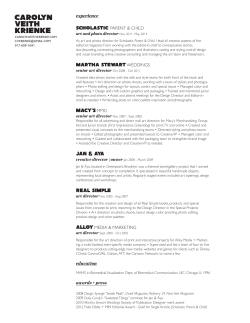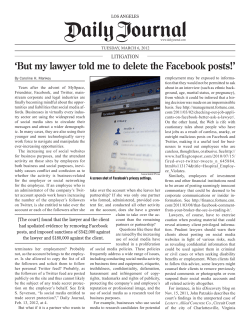
® #4250 Tree House Platform Building Plans
® #4250 Tree House Platform Building Plans Assembly requires advanced skill level. If you have any questions or concerns, please contact us immediately. We’re here to help! 1-888-908-8733 | service@natureexplore.org Nature Explore is a collaborative project of Arbor Day Foundation and Dimensions Educational Research Foundation | natureexplore.org ©2012 Dimensions Foundation A. Planning Tips: HOW TO: Build Tree House Platforms Skill level: Advanced 1. Determine where you want the Tree House Platforms. The grade or surface elevation may be a factor. Is there an existing tree that will become integral to the structure? Will a young tree be planted? What are the critical dimensions: (Length, width and height)? To be successful with this project, you will need experience with a wide variety of specialized tools and it may take several days to finish. If you've built a deck 2. Use our working drawings to custom design your before, this project may match your abilities. Consider Skill Level: Advanced platforms. The platforms are modular. There can be as hiring a contractor to you help youexperience with this To be successful with this project, will need with aproject. wide variety of specialized tools and it may take several days to finish. If you’ve built a deck this project may match your abilities. Consider a fewhiring as one platform and as many as your imagination and contractor to help you with this project. Description: space permits. Remember to check with local building Description: codes. Plans may need to be modified to fit code. In These Tree House Platforms are modular in design addition, special building permits may be required. These climbing platforms are modular in design and can be expanded to fit any space, large or small. Climbing Platforms and can be expanded to fit any space, large or small. Each platform Photo5’ x15’,measures 5′ x 5′, with varied Each platform in Photo in 1 measures with varied elevations. The hand-peeled ponderosa pine railings elevations. The Hand-Peeled Ponderosa Pine Posts and posts add a rustic quality and safety element to the climbing space. Children can use the railings and Railings add a rustic quality and safety element as anchors for fabric walls as they create temporary to theThespace. can the railings rooms. platformsChildren work beautifully builtuse around a mature tree or a young tree can be planted to as anchors for fabric walls as they create temporary integrate with the climbing platforms. rooms. The platforms work beautifully built around a mature tree or a young tree can be planted to integrate with the Tree House Platforms. Photo 1 Materials List: Materials List per single 5′ x 5′ platform module: Note: working drawings included in this package ITEM NO. 1 2 3 4 5 6 Description strong-tie LUC26Z stringer 2 x 6 (1) stringer 2 x 6 (2) joist-2 x 6 (1) decking 5 qrt x 6 (2) decking 5 qrt x 6 (1) Material metal bracket treated lumber or cedar treated lumber or cedar treated lumber or cedar treated lumber or cedar treated lumber or cedar all parts/QTY. 8 2 2 3 9 2 3. We suggest building platforms off-site using deckbuilding methods then transported to the location for installation. Use the bill of materials enclosed per each 5′ x 5′ platform. Additional information on deck building can be found at your local home improvement or hardware store or in the resources section at the back of this guide. When constructing each 5′ x 5′ platform, leave one or two decking boards off of each end to leave space to attach the post brackets. 4. The horizontal rails of your Tree House Platforms are not intended for sitting or hanging. If you anticipate this behavior, add an additional support post at the middle of each platform to extend to the height of the railing. For long-term stability, use Polymer Coated Star Deck Screws. A. Planning Tips: Photo 1 Planning is a crucial step in any construction project. A good plan serves as a reference throughout the project. Use the following suggestions to help with the planning process: 1. Determine where you want the climbing platforms. The grade or surface elevation may be a factor. Is there an existing tree that will become integral to the structure? Will a young tree be planted? What are the critical dimensions? (Length, width and height) 2. Use our working drawings to custom design your platforms. The platforms are modular. There can be as few as one platform and as many as your imagination and space permits. Remember to check with local building codes. Plans may need to be modified to fit code. In addition, special building permits may be required. Use the following grid to layout the design of your platforms. Place a post at each corner as shown in Photo 1. 3. We suggest building platforms off-site using deck-building methods then transported to the location for installation. Use the bill of materials enclosed. Additional information on deck building can be found at your local home improvement or hardware store. PAGE 1 We’re here to help! 1-888-908-8733 | service@natureexplore.org Nature Explore is a collaborative project of Arbor Day Foundation and Dimensions Educational Research Foundation | natureexplore.org ©2012 Dimensions Foundation 2 B. Laying out the Tree House Platforms: 1. The 4 x 4 posts that will connect the modular platforms can be laid out in a 5′ x 5′ grid pattern. Also see working drawings for center-to-center dimensions for 4 x 4 posts. If the platforms are built previous to installation, it is important that the platforms have been constructed square. Also remember, the intersection of the grid pattern must match up with the platform dimensions before post digging begins. C. Digging the posts: 1. Use posthole diggers or a power auger to dig the footing holes. It takes two people to handle a power auger, so if you choose this option, get a helper. (Note: you will need a 6″ (or larger) auger bit for 4 x 4 posts.) Photo 2 2. After the holes are dug, place the 4 x 4 posts into the holes. Depending on the design of your Tree House structure cut the posts to the approximate length desired. When rustic poles are added, the 4 x 4 posts need to be longer (see Photo 2). *Check with local codes for required depth and size of footings. 3. As with any building project, it is important to install all components plumb and level. D. Mounting the brackets: 1. Screw the mounting brackets to the 4 x 4 posts that will hold the platforms to the posts (see Photo 3). Photo 3 E. Inserting the platforms: 1. After the brackets have been screwed to the 4 x 4 posts, the platform(s) are placed into the brackets. Note: At this point, the platforms are NOT YET screwed to the brackets (see Photo 4). 2. Clamps or tie-down belts can be used to tightly secure the posts in the corners of the platform(s). (See Photo 7, next page). The center of the holes should align with the 4 x 4 posts. Again, during this process, make sure that the 4 x 4 posts remain plumb. Using a level, transit, or laser level, the platforms will be leveled as well. Photo 4 F. Pouring the concrete: 1. With the 4 x 4 posts plumb and level, you are now ready to pour the concrete directly into the holes (with the 4 x 4 posts). We’re here to help! 1-888-908-8733 2. Allow the concrete to cure per manufacturer’s recommendations and local standard practices. | service@natureexplore.org Nature Explore is a collaborative project of Arbor Day Foundation and Dimensions Educational Research Foundation | natureexplore.org ©2012 Dimensions Foundation 3 G. Completing the project: 1. Remove the clamps or tie-down belts and finish screwing the brackets. To reach the brackets on the inside, a few decking boards will need to be left off (see Photo 7). You can now screw in the remaining deck boards. 2. The 4 x 4 posts can be cut to length (see Photo 2). Depending on the design intent, rustic poles can be attached. To attach the rustic poles, cut the 4 x 4 posts diagonally and remove one side of the diagonal using a chain saw (see Photo 6). Cut the same piece from the rustic post and attach the two with carriage or lag bolts. Rustic rails can also be added (see Photo 5). Photo 5 H. Customizing your Tree House Platform Multiple platforms can be installed over time (see working drawings). Be sure to plan for this however, and check with local building codes for acceptable height requirements. We recommend a maximum height of 17″ above ground level. Finally, using an existing tree or adding a young tree to the platform design and layout will be key to the beauty of the project. *Be sure to test the structural integrity of the platforms before you allow children to use them. Photo 6 Photo 7 We’re here to help! 1-888-908-8733 | service@natureexplore.org Nature Explore is a collaborative project of Arbor Day Foundation and Dimensions Educational Research Foundation | natureexplore.org ©2012 Dimensions Foundation 4 3 PLATFORMS Working Drawings B A DETAIL A USE LAG OR CARRIAGE BOLTS AS NEEDED 4″ x 4″ POSTS, CUT TO LENGTH AS NEEDED DETAIL B USE LAG BOLTS Modular platform Decking fastened with #8 x 2 1/2″ Screws (1/8″ spacing between boards) 5′-0″ 4′-8 3/8″ B Equal spacing 5′-0″ 4′-8 3/8″ 5 6 2 1 13/16" B We’re here to help! SECTION B-B 1 1-888-908-8733 C DETAIL C 4 1 13/16" 3 | Strong-tie brackets are screwed to 4″ x 4″ posts first. (two used in each corner) service@natureexplore.org Nature Explore is a collaborative project of Arbor Day Foundation and Dimensions Educational Research Foundation | natureexplore.org ©2012 Dimensions Foundation 5 ® Nature Explore Classroom resources are designed to bring children closer to nature and help them develop life-long learning skills. To ensure safety and effectiveness, please be sure to follow the instructions for installation, building codes, warnings, and maintenance. Failure to follow all of the instructions will void any warranty offer. Furthermore, even Nature Explore Classroom resources installed and maintained in accordance with the instructions can present hazards to children in the absence of adequate supervision. Depending on the location and nature of the outdoor classroom, the supervisors may be paid professionals (fulltime park or school/child care facility staff ), paid seasonal workers (college or high school students), volunteers (PTA members), or the parents of the children playing in the outdoor classroom. The quality of the supervision depends on the quality of the supervisor’s knowledge of safe play behavior. Therefore, supervisors should understand the basics of safety in an outdoor classroom. Outdoor classroom supervisors should be aware that not all equipment and items are appropriate for all children who may use the outdoor classroom. Posted signs or labels indicating the appropriate age of the users should be checked before play begins, and supervisors should direct children to equipment appropriate for their age. It is also very important to recognize that preschool-age children require more attentive supervision than older children do. Building Codes: Variations in building codes, specific local development covenants, or site conditions may require modification to the installation of the product. Outdoor classroom owners are ultimately responsible for complying with all applicable permits, building codes and other regulatory requirements, and should review their outdoor classroom with local building inspectors. All appropriate building permits should be obtained prior to starting installation. Liability: Nature Explore shall have no liability or responsibility for actions or inaction in connection with any Nature Explore item or any damage or liability that arises during the construction and/or use. Always read and observe all safety precautions provided by the Consumer Product Safety Council regarding toy safety, playground safety, and any other applicable programs. Likewise, always read and observe all safety precautions provided by any tool or equipment manufacturer consulted during installation. We’re here to help! 1-888-908-8733 | service@natureexplore.org Nature Explore is a collaborative project of Arbor Day Foundation and Dimensions Educational Research Foundation | natureexplore.org ©2012 Dimensions Foundation 6 Important Facts About Natural Wood Products Many of our items, such as Giant Tree Cookies, balance beams, tables, seating, and instruments, are hand-crafted out of natural materials for their educational and environmental value, natural aesthetic qualities, and personal enjoyment. Routine visual inspection and occasional sanding or bolt tightening is recommended to ensure items are in the best and safest condition and to extend the overall useful life of the item(s). If indicated, items can arrive with an initial application of a weather sealant. Annual application is recommended. As natural wood resources age and acclimate to changing climates, you will notice graining, knots and checking (a natural cracking process that occurs as wood releases moisture across annual growth rings) as shown below. Should this natural process result in splintering or a rough surface, simply sand the area and return it to use. Also, these resources will naturally develop a beautiful silvery-gray patina over time. Observing wood’s natural color change and aging is a valuable part of children’s connection with nature. Each item’s dimension and appearance will vary due to the uniqueness of the wood from which it was created. There are a variety of treatment options you can use to extend the life of your Nature Explore product such as linseed oil or soy-based sealants. Please consult a local expert (i.e. wood-working expert, general contractor, lumber yard, parks & recreation department, etc.) to see what options are appropriate and safe in your particular area. In rare cases, as items continue to dry and acclimate to your local climate/environment, there is a chance that mold discoloration will appear. Routine sanding and ensuring the item is installed on a surface with adequate drainage (i.e. mulch, gravel, etc.) will reduce the potential for mold. Installing on grass surfaces allows moisture to be trapped underneath the product and is not recommended. Should mold occur on any of your Nature Explore items, please contact us for a quick and easy removal recommendations. Quality Commitment Nature Explore is dedicated to children’s education and safety. All of our resources are field-tested by experienced teachers and researchers prior to being available in the Sourcebook. Items that are hand-crafted, such as instruments, tables or balance beams, are done so by trusted professionals who share in our mission to connect children with nature. Our natural resources are crafted out of wood and other materials carefully selected for functionality, safety and durability. If you ever have questions or would like more information about items you would like to order or have received, please contact us via phone or email. We are happy to discuss things in detail with you or send you additional information. If inquiring about an existing order please have your ‘bill to’ zip code and order number handy (Ex: SO90001234). Also, our warranty, return and exchange policies are located online for your quick reference. We’re here to help! 1-888-908-8733 | service@natureexplore.org Nature Explore is a collaborative project of Arbor Day Foundation and Dimensions Educational Research Foundation | natureexplore.org ©2012 Dimensions Foundation 7
© Copyright 2025














